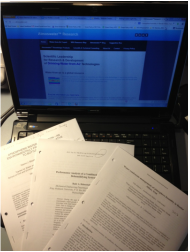
A nice thing the articles listed below have in common is that they cited my article from 2001 !
The paper by Blackburn and Peters (2009) is especially interesting. They discovered that a home/office Atmospheric Water Generator in the context of Australia has a greater environmental impact than a bottled water cooler. This provides a challenge to the water-from-air industry—how do we use life cycle analysis to design AWGs having minimal environmental impact?
Blackburn, N. J. and Peters, G. M. 2009. Atmospheric water generation—an environmentally friendly alternative to bottled water? Australian Life Cycle Assessment Society (ALCAS) Conference 2009.
Habeebullah, B. A. 2010. Performance Analysis of a Combined Heat Pump-Dehumidifying System. JKAU: eng. Scie., 21 (1), 97–114.
Zimmermann, R., Mantelli, M. B. H., Borges, T. P. F., and Costa, C. A. S. 2010. Viability study of retrieving the evaporated water in a mechanical draft cross flow cooling tower. 2010 14th International Heat Transfer Conference, ITHC 14 4, 751–760.
Bergmair, D., Metz, S. J., De Lange, H. C., Van Steenhoven, A. A. 2012. Modeling of a vapor selective membrane unit to increase the energy efficiency of humidity harvesting. Journal of Physics: Conference Series 395 (1), art. no. 012161.
Alipour, V., Mahvi, A., and Rezaei, L. 2013. Water condensate management of atmosphere humidity in Bandar Abbas, Iran. in Kanarachos, A. and , Mastorakis, N. E. (editors). 2013. Recent Advances in Environmental Science. WSEAS Press, 279–284.
Khayet, M. 2013. Solar desalination by membrane distillation: Dispersion in energy consumption analysis and water production costs (a review). Desalination 308, 89–101.
Muñoz-Garcia, M. A., Moreda, G. P., Raga-Arroyo, M. P., Marin-González, O. 2013. Water harvesting for young trees using Peltier modules powered by photovoltaic solar energy. Computers and Electronics in Agriculture 93, 60–67.

